Recognizing the early signs of sick cooling systems can help you understand your car once it displays the symptoms. It not only reduces the chances of your car breaking down but it can also save you a substantial amount of money and valuable time. Take time to read these signs and remember them whenever your car is behaving oddly.
1. Overheating engine
This is one of the most obvious signs that there is something wrong with your cooling system. If you catch your hood smoking due to intense heat then you can safely assume that something is preventing the coolant from doing its job.
When you encounter this problem you would naturally want to pop the hood and see what's happening under. However, you should first deflect the sense of urgency and turn the engine off and let the engine cool down. Once it's safe to touch, lift up the hood and locate the coolant container.
Remove the cap and take a peep into the reservoir to see if the coolant level is low. You might be tempted to refill it after seeing the low coolant level but we suggest you do a thorough inspection first.
Check the hoses around the coolant and inspect for breaks, tears, rips, and holes where the coolant may be leaking. If there are no leaks or damages to any of the hoses then refill the coolant with a similar type as to the one already in the container. Mixing different types of coolant can cause the coolants to form gel-like elements and possibly clog the radiator.
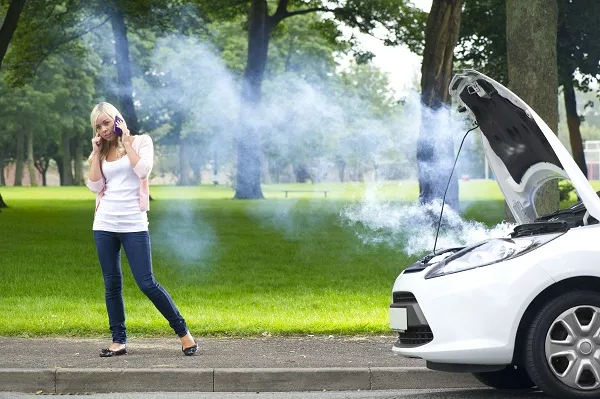
Overheating engine is the most obvious signs that there is something wrong with your cooling system
Good to know:
There could also be clogs in the hoses and this can block the flow of the coolant within the engine. If you notice that your engine is overheating but you see that there is still enough coolant, then this might just be the problem.
You may not be able to fix this on your own so consider getting professional help and a towing service if your car broke down. You may require tools to access the cause of the blockage and to remove it, so better leave it to the experts.
>>> Worth to note: What to do if your car overheats: 10 must-know things for Pinoy drivers.
2. Defective parts
If you notice something wrong with your ride and you suspect that it has something to do with the cooling system, check these parts first:
- Hoses
- Engine belts
- Freeze plugs
- Fan blades
- Thermostat
- Radiator
- Pressure cap
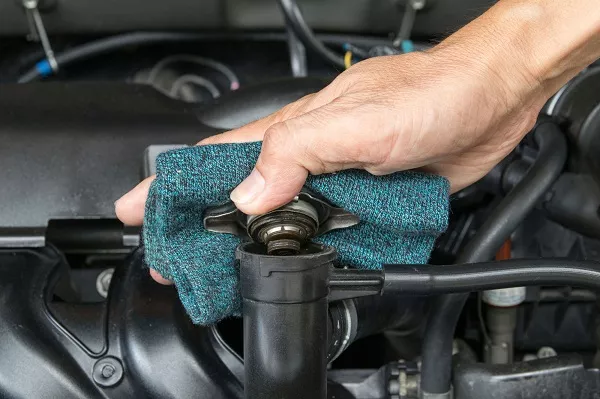
Any signs of radiator leaks, misshapen and bulgy hoses, cracked belts tell a sick cooling system
You don't need any bulky tool to check these parts. A thorough visual inspection will be enough to identify any potential cause for alarm. Use a small flashlight and a snake rod to get into small spaces to properly inspect the engine parts.
If you see any signs of radiator leaks, misshapen and bulgy hoses, cracked belts, then your cooling system is definitely crying out for help. If the problem is a leak from a hose that's positioned in plain sight, then you can easily patch it up with duct tape.
Frayed belts can also be easily repaired if you have the right tools at home. If the damaged hose is located under a pile of other parts then take your car to the closest auto mechanic. It will be a tight job to do and you may not have the tools to fix the damaged part.
3. If something smells sweet around your car
Your coolant can harden when the cold weather starts to kick in, hence the importance of anti-freeze. This engine fluid has a sweet but recognizable odor that any vehicle owner can recognize.
You will notice this scent if one or both of these scenarios happen:
- Your engine used up all the coolant dry
- There's a leak in one of the hoses
Auto Repair & Diagnostics: How to Diagnose a Cooling System Problem
A rare cause could also be a faulty head gasket. One way to detect a problem with the connection to the head gasket is by checking the exhaust. If your car is emitting white smoke then your car may be burning the coolant in the wrong place.
Most cases of the white exhaust are when the coolants burn in the chamber in the engine - definitely not the place where it should be. If you experience all or any of these while driving, do not attempt to drive the car anymore or it can sustain a great amount of damage. Other parts may get affected especially if you force your car to go for a long drive.
>>> Related post: 6 car smells that could mean trouble
4. If the coolant is lower than the warning mark
Any of the following reasons can be causing your coolant levels to drop below the warning mark.
Overflowing reservoir
Most coolant tanks are made with a tube that lets the coolant escape from its original container. The coolant naturally expands as it reacts to heat and cools down the engine parts.
When the weather is really hot and you put on the air conditioner, the coolant may expand too much and end up being wasted and spilled. Make sure that whenever you refill the coolant, it is always in between the minimum and the maximum line on the reservoir.
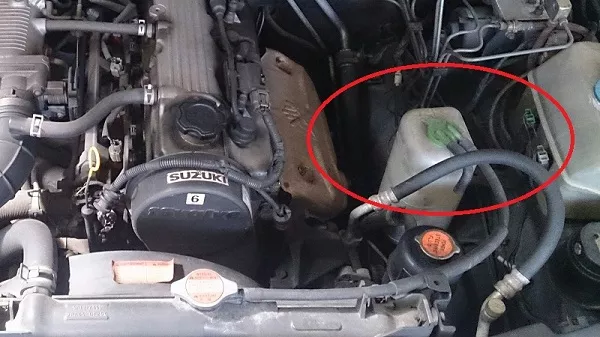
Make sure that whenever you refill the coolant, it is always in between the minimum and the maximum line on the reservoir.
Leaks from the radiator
Leaks from the radiator aren’t usually noticed due to the size of the hole. It’s usually just the size of the small pin. Another thing that makes it unnoticeable is that it only leaks when the car is running.
When the engine stops after a wholesome drive, that’s the time that visible leaking will occur. It also comes with a hot moist smell that’s hard to ignore. These tiny holes are called pinholes and they grow over time. If left alone and the holes grow bigger, you may need to spend on a new radiator as well as replacement service.
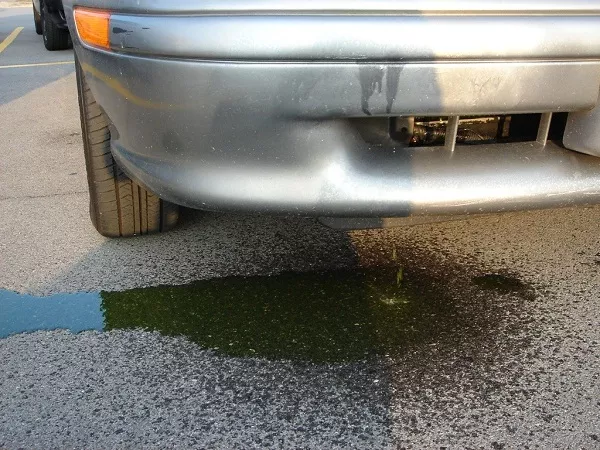
When the engine stops after a wholesome drive, that’s the time that visible leaking will occur.
Blown or Leaking Gasket
A blown or leaking gasket can cause the water in the reservoir to leak into parts of the engine where it’s not supposed to go. This can also cause the coolant to run dry without any obvious leaks of any kind.
Another tested way to check for a defective head gasket is by checking the color of the tip of the oil dipstick. Bubbles or a milky consistency is a yes to the faulty head gasket.
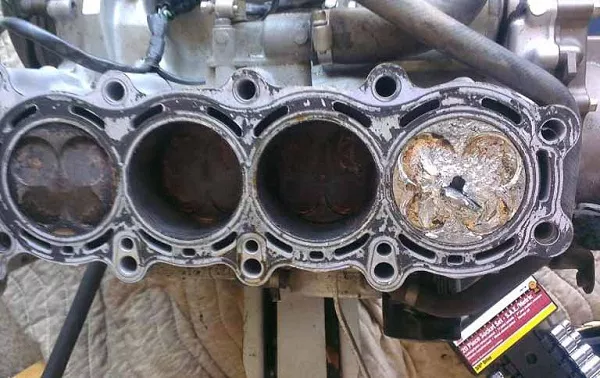
A blown or leaking gasket can cause the water in the reservoir to leak into parts of the engine where it’s not supposed to go.
>>>Check out for more useful car maintenance tips.
Recent posts
- 5 simple tips to maximum your car engine's performance Aug 16, 2022
- 4 Essential Care Tips for Maintaining Your Car Engine Nov 30, 2022
- The Safest Way on How to Put Water in a Car Radiator & Other Essential Facts Mar 06, 2021
- Spotting 8 Early Symptoms of Engine Problems Jul 05, 2018
- Distilled water vs Coolant: Which is the best product for your radiator? Mar 06, 2021












